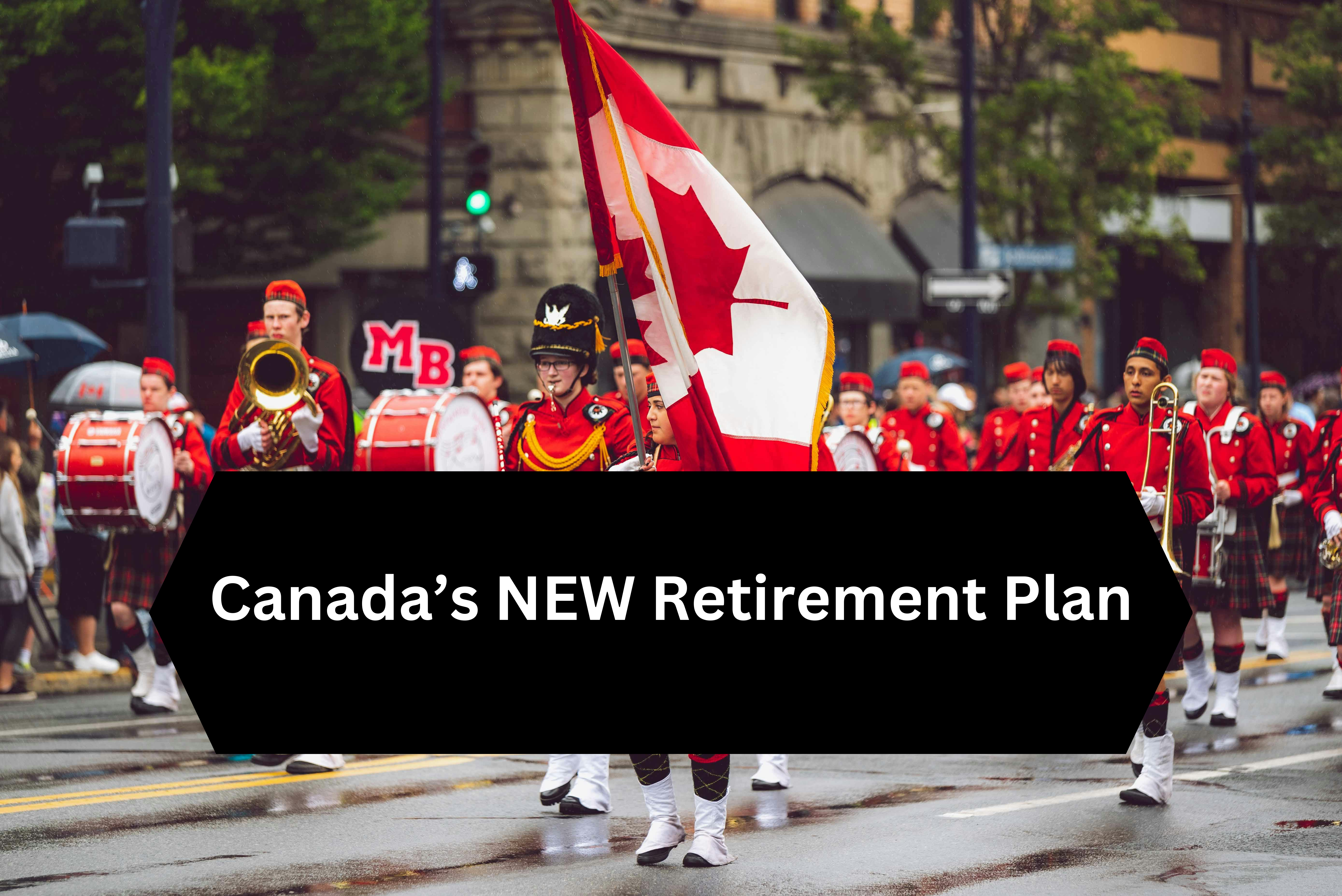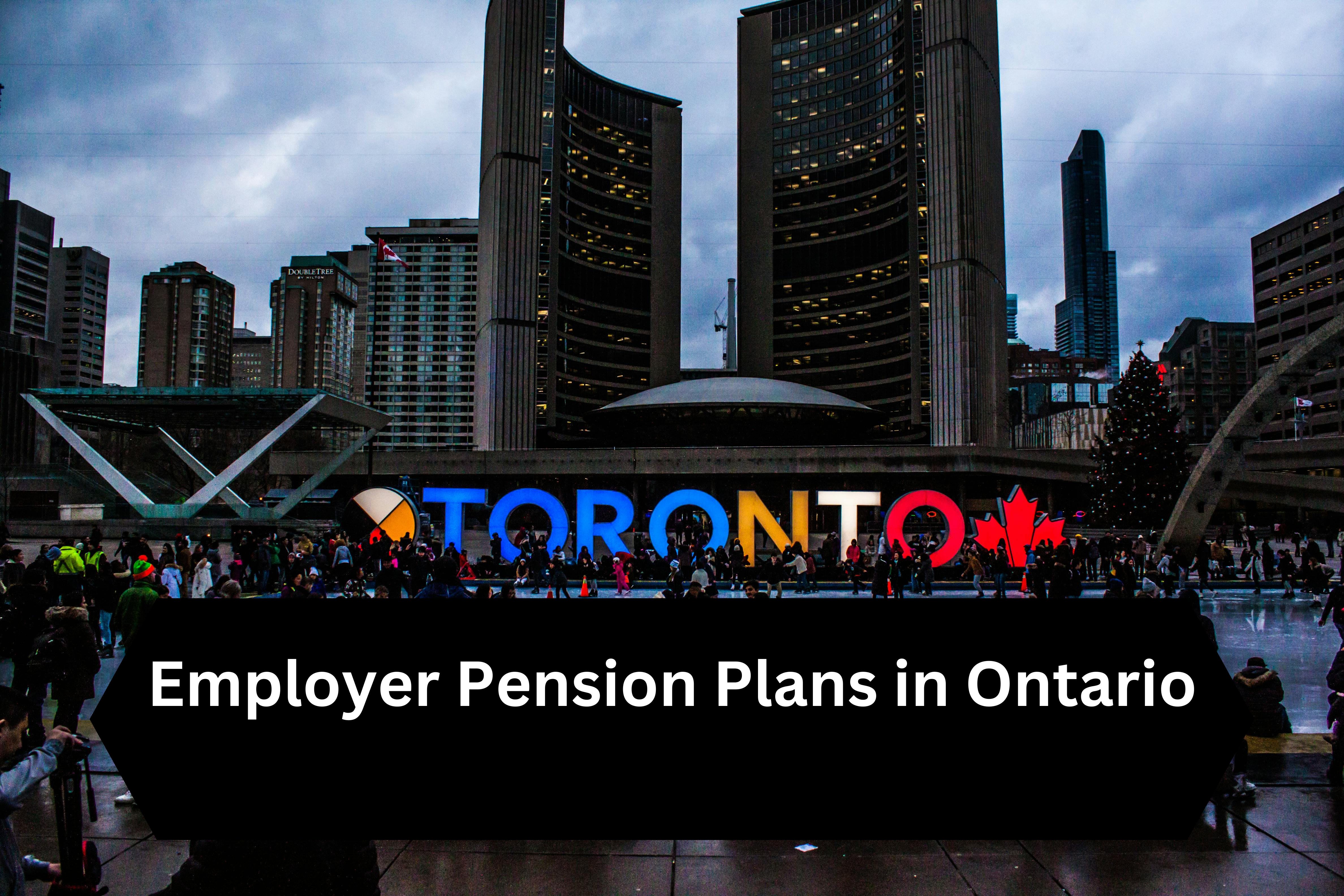Registered Retirement Savings Plans (RRSPs): How They Work

Table of Contents
- What is a Registered Retirement Savings Plan (RRSP)?
- Why is RRSP Important for Retirement?
- How RRSPs Work in Simple Terms
- Eligibility Criteria for Opening an RRSP
- Can Non-Residents Open an RRSP?
- How Much Can You Contribute to an RRSP?
- Over-Contributing to an RRSP: Penalties and Fees
- How RRSP Contributions Reduce Your Income Tax
- RRSP vs. TFSA: Which Offers Better Tax Benefits?
- Types of Investments Allowed in RRSP
- Types of RRSP Withdrawals
- How RRSPs Fit Into a Retirement Strategy
- RRSP vs. TFSA: Which Is Better for Retirement?
- RRSP Strategies to Maximize Growth
- Special RRSP Programs
- What Happens to Your RRSP When You Retire or Pass Away?
- Common RRSP Mistakes to Avoid
Disclaimer: This article is for informational purposes only and does not constitute legal, financial, or tax advice. Pension laws, tax regulations, and eligibility requirements may change over time. Consult with a qualified tax professional, financial advisor, or government agency for personalized guidance regarding your specific situation.
What is a Registered Retirement Savings Plan (RRSP)?
A Registered Retirement Savings Plan (RRSP) is a tax-advantaged savings account designed to help Canadians save for retirement. The government introduced RRSPs in 1957 to encourage people to plan for their future by offering tax benefits on contributions and investment growth.
Why is RRSP Important for Retirement?
An RRSP helps you grow your retirement savings faster because:
Contributions are tax-deductible – This means you can reduce your taxable income when you contribute.
Investments grow tax-free – Unlike regular savings accounts, you don’t pay tax on interest, dividends, or capital gains while your money stays in the RRSP.
You can choose different investment options – You can hold stocks, bonds, mutual funds, and more.
Example: If you earn $60,000 per year and contribute $5,000 to your RRSP, you only get taxed on $55,000 instead of $60,000. This means you pay less income tax for the year!
Key Benefits of Using an RRSP
Tax savings – You pay less tax today and delay paying taxes until retirement (when you may be in a lower tax bracket).
Long-term wealth growth – Your investments grow tax-free inside the RRSP.
Retirement security – It helps you build a strong financial foundation for your retirement years.
How RRSPs Work in Simple Terms
1️⃣ You contribute money to your RRSP (up to your annual limit).
2️⃣ You deduct that contribution from your taxable income (saving money on taxes).
3️⃣ Your savings grow tax-free while inside the RRSP.
4️⃣ When you retire, you withdraw the money and pay less tax (since retirees usually earn less income).
Eligibility Criteria for Opening an RRSP
You can open an RRSP if you meet these three conditions:
✔️ You are a Canadian resident for tax purposes.
✔️ You have earned income (such as salary, self-employment income, or rental income).
✔️ You file a Canadian tax return.
Example: Even if you're 19 and just started working part-time, you can open an RRSP because you have earned income.
Minimum and Maximum Age to Contribute
Minimum Age: There’s no minimum age to open an RRSP, but you must have earned income.
Maximum Age: You can contribute to an RRSP until December 31 of the year you turn 71. After that, you must convert your RRSP into a Registered Retirement Income Fund (RRIF) or an annuity.
Example: If you turn 71 this year, you have until December 31 to make your final RRSP contribution before converting it.
Can Non-Residents Open an RRSP?
If you move out of Canada, you can keep your existing RRSP, but:
You cannot contribute to it unless you still have Canadian taxable income.
Withdrawals are subject to non-resident withholding taxes (usually 25%).
How Much Can You Contribute to an RRSP?
Your annual RRSP contribution limit is 18% of your previous year’s earned income, up to a maximum set by the government.
RRSP Contribution Limits for Recent Years:
2023: $30,780
2024: $31,560
Example: If you earned $50,000 in 2023, your RRSP limit for 2024 would be 18% of $50,000 = $9,000 (unless you’ve already maxed out your room).
Knowing RRSP Contribution Room
Any unused RRSP contribution room carries forward indefinitely.
You can find your total contribution room on your Notice of Assessment from the CRA.
Example: If your RRSP limit was $10,000 last year but you only contributed $5,000, you can carry forward the extra $5,000 to next year.
Over-Contributing to an RRSP: Penalties and Fees
🚨 If you contribute more than $2,000 over your limit, you’ll pay a 1% penalty per month on the excess amount.
💡 Example: If you over-contribute by $5,000, you’ll be charged 1% per month on $3,000 = $30 per month until corrected.
How to Track Your RRSP Contribution Room
Log in to CRA My Account.
Check your latest Notice of Assessment from the CRA.
How RRSP Contributions Reduce Your Income Tax
When you contribute to an RRSP, you can deduct that amount from your taxable income, reducing the taxes you owe.
Example:
If your income is $70,000, your tax bill could be around $12,000.
If you contribute $10,000 to an RRSP, your taxable income drops to $60,000, and your tax bill could drop to $9,500 – saving you $2,500 in taxes!
Tax-Deferred Growth: What Does It Mean?
Any gains, interest, or dividends earned inside your RRSP are not taxed while they stay in the account. You only pay tax when you withdraw funds in retirement.
Example: If your RRSP investments grow from $50,000 to $80,000, you don’t pay tax on the $30,000 gain until you withdraw it.
RRSP vs. TFSA: Which Offers Better Tax Benefits?
| Feature | RRSP | TFSA |
|---|---|---|
| Contributions are tax-deductible? | ✅ Yes | ❌ No |
| Withdrawals are tax-free? | ❌ No | ✅ Yes |
| Best for long-term retirement savings? | ✅ Yes | ✅ Yes |
| Contribution room based on income? | ✅ Yes | ❌ No (TFSA has fixed limits) |
Expert Tip: If you're in a high tax bracket, use an RRSP for tax savings now. If you're in a lower tax bracket, a TFSA may be better for flexibility.
How RRSPs Affect Your Tax Refund
The more you contribute, the bigger your tax refund will be. Many Canadians use their RRSP refund to:
1 Reinvest in more RRSP contributions.
2 Pay down mortgages or debt.
3 Build an emergency fund.
Types of Investments Allowed in RRSP
The Canadian government allows a variety of investment options within an RRSP, including:
✅ Stocks (Equities) – Owning shares of companies like TD Bank, Apple, or Shopify can provide high returns over time, but they come with risks.
✅ Bonds – These are low-risk investments that provide steady income, such as Government of Canada bonds.
✅ Exchange-Traded Funds (ETFs) – A popular option for diversification, ETFs track market indexes like the S&P/TSX 60 (Canada's largest companies).
✅ Mutual Funds – Professionally managed portfolios that pool money from multiple investors to buy stocks, bonds, or other assets.
✅ Guaranteed Investment Certificates (GICs) – Safe, fixed-term investments that guarantee a return, ideal for conservative investors.
✅ Cash & High-Interest Savings Accounts (HISAs) – RRSPs can hold cash, but it's better to invest for higher returns.
Example: How Investments Affect Growth
Let’s say you invest $10,000 in different RRSP options:
In a GIC at 3% interest → After 20 years, it grows to $18,061
In an ETF with 7% average return → After 20 years, it grows to $38,697
In stocks with a 10% return → After 20 years, it grows to $67,275
The right choice depends on risk tolerance and retirement goals.
Choosing the Right RRSP Investments
If you want low risk, consider GICs or bonds.
If you have 10+ years until retirement, invest in ETFs or stocks for higher growth.
If you prefer expert management, mutual funds may be a good option.
Source [ RRSP Investment Rules ]
Types of RRSP Withdrawals
RRSPs are designed for long-term retirement savings, but you can withdraw funds before retirement if needed. However, withdrawals come with tax consequences.
Regular RRSP Withdrawals (Before Retirement)
When you withdraw from your RRSP before age 71, the government taxes the amount immediately at the following rates:
| Withdrawal Amount | Withholding Tax (Federal Only) |
|---|---|
| Up to $5,000 | 10% (5% in Quebec) |
| $5,001 to $15,000 | 20% (10% in Quebec) |
| Over $15,000 | 30% (15% in Quebec) |
Example: If you withdraw $10,000, the bank will hold back $2,000 (20%) for taxes.
Tip: Instead of withdrawing from your RRSP early, consider using a TFSA (Tax-Free Savings Account) for flexible, tax-free withdrawals.
2. RRSP Withdrawals After Retirement (Converting to a RRIF)
By December 31 of the year you turn 71, you must convert your RRSP into a:
1️⃣ RRIF (Registered Retirement Income Fund) – Provides regular withdrawals, and only the amount withdrawn is taxed.
2️⃣ Annuity – A contract with an insurance company that guarantees lifetime payments.
💡 Example: If you have $500,000 in an RRSP and withdraw $30,000 per year from a RRIF, you’ll pay tax only on the $30,000, not the full balance.
Source : RRSP Withdrawals & Taxes
How RRSPs Fit Into a Retirement Strategy
An RRSP is a key part of retirement planning because it allows tax-deferred growth, helping you build a bigger nest egg for when you stop working.
✅ RRSPs Reduce Taxes While Working
Contributions lower taxable income, leading to bigger tax refunds.
The tax savings can be reinvested to grow wealth faster.
✅ RRSPs Provide Income During Retirement
Funds grow tax-free until withdrawn.
At retirement, withdrawals are taxed, but usually at a lower rate since income is lower.
Example:
If you earn $80,000 per year and contribute $10,000 to an RRSP, your taxable income drops to $70,000, reducing the tax you owe.
How Much Should You Contribute to an RRSP?
Financial experts suggest saving 10-15% of your income in an RRSP.
✅ If you earn $50,000 per year → Aim to contribute $5,000–$7,500 per year.
✅ If you earn $80,000 per year → Aim to contribute $8,000–$12,000 per year.
RRSP vs. TFSA: Which Is Better for Retirement?
| Feature | RRSP | TFSA |
|---|---|---|
| Tax Deduction on Contributions | ✅ Yes | ❌ No |
| Tax-Free Withdrawals | ❌ No | ✅ Yes |
| Best For | High-income earners & retirement savings | Flexible savings & short-term goals |
Source : Retirement Income & RRSPs
RRSP Strategies to Maximize Growth
Maximizing the growth of your RRSP involves strategic planning and disciplined execution. Here are some effective strategies:
1. Contribute Early and Regularly
By making contributions at the beginning of the year or through regular monthly deposits, your investments have more time to grow, benefiting from compound interest. For instance, contributing $5,000 annually at a 5% return will yield more over 20 years if started earlier due to the compounding effect.
2. Take Advantage of Employer Matching
If your employer offers an RRSP matching program, ensure you contribute enough to receive the full match. This is essentially free money that can significantly boost your retirement savings.
3. Utilize Unused Contribution Room
If you haven't maximized contributions in previous years, you can carry forward unused contribution room. Your Notice of Assessment from the Canada Revenue Agency (CRA) will detail your available room.
4. Invest Tax Refunds Back into Your RRSP
Using the tax refund generated from your RRSP contribution to make further contributions can accelerate growth. This reinvestment strategy enhances the power of compounding.
5. Diversify Your Investments
Holding a mix of asset types—such as stocks, bonds, and mutual funds—can balance risk and return, tailored to your retirement timeline and risk tolerance.
Source: RBC Wealth Management
Special RRSP Programs
The Canadian government offers programs that allow you to withdraw from your RRSP without immediate tax penalties under specific conditions.
1. Home Buyers' Plan (HBP)
The HBP lets first-time homebuyers withdraw up to $35,000 from their RRSP to purchase or build a qualifying home. Couples can withdraw up to $70,000 combined.
Eligibility:
Must be a first-time homebuyer.
Must have a written agreement to buy or build a qualifying home.
Must intend to occupy the home as your principal residence within a year.
Repayment:
Repayments start the second year after withdrawal and must be completed within 15 years. Each year, you'll repay 1/15 of the withdrawn amount. For example, if you withdraw $15,000, your annual repayment would be $1,000.
Source : Canada.ca
2. Lifelong Learning Plan (LLP)
The LLP allows you to withdraw up to $10,000 per year from your RRSPs, up to a total of $20,000, to finance full-time education or training for yourself or your spouse/common-law partner.
Eligibility:
Must be enrolled in a qualifying educational program.
Full-time enrollment is required, with exceptions for disabilities.
Repayment:
Repayments begin in the fifth year after your first withdrawal or the second year after you cease studies, whichever comes first. The repayment period spans 10 years.
Source : Canada.ca
What Happens to Your RRSP When You Retire or Pass Away?
Understanding the transition of your RRSP during retirement or upon death is crucial for effective financial planning.
At Retirement
By December 31 of the year you turn 71, you must convert your RRSP into a retirement income option, such as a Registered Retirement Income Fund (RRIF) or an annuity.
RRIF: Allows flexible withdrawals, subject to minimum annual amounts.
Annuity: Provides guaranteed income for life or a specified period.
Withdrawals are taxed as regular income, so strategic planning can help minimize tax liabilities.
Upon Death
The treatment of your RRSP upon death depends on your designated beneficiary:
Spouse/Common-Law Partner: The RRSP can be transferred tax-free to their RRSP or RRIF, deferring taxes.
Financially Dependent Child/Grandchild: Funds can be transferred to their RRSP, RRIF, or used to purchase an annuity, under certain conditions.
No Designated Beneficiary: The RRSP's value is included in your final income tax return and subject to taxation.
Proper estate planning ensures your RRSP assets are distributed according to your wishes and can minimize tax implications.
Common RRSP Mistakes to Avoid
Avoiding common pitfalls can enhance the effectiveness of your RRSP.
1. Over-Contributing
Contributing more than your allowable limit incurs a penalty of 1% per month on the excess amount. Monitor your contribution room via your CRA Notice of Assessment or through the CRA's online services.
2. Withdrawing Funds Early
Early withdrawals are added to your taxable income and may be subject to withholding taxes, reducing the amount available for retirement.
3. Neglecting Investment Diversification
Investing solely in one type of asset can increase risk. Diversify your RRSP holdings to balance potential returns and risks.
4. Ignoring Beneficiary Designations
Failing to designate or update beneficiaries can lead to unintended distribution of assets and potential tax consequences.
Also read; Best Employer Pension Plans in Ontario



